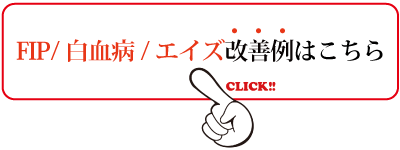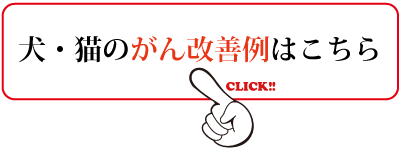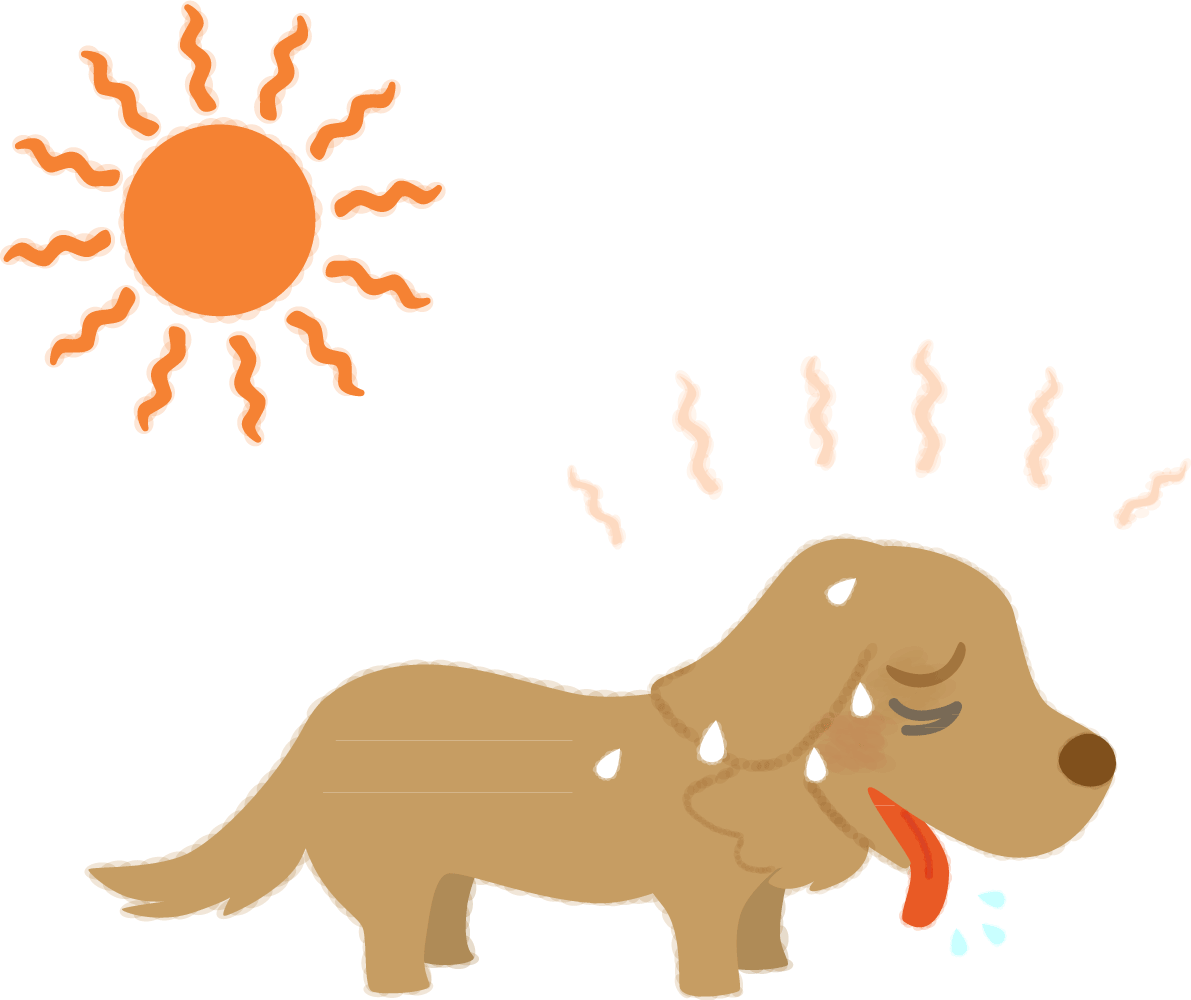Here is the translation of the provided text:
—
One issue that becomes more common as humidity starts to rise is ‘heatstroke’. Heatstroke risks increase starting around May and become extremely high during the rainy season.
Pets such as dogs and cats are covered in fur, which not only makes it easy for heat to get trapped in the fur layer but also makes it difficult for them to regulate their body temperature by sweating like humans do. This makes them more prone to heatstroke than humans.
In recent years, summer temperatures have reached dangerously high levels, and it is not uncommon for pets to lose their lives. Additionally, dogs and cats live close to the ground. It is said that the temperature near asphalt can be approximately 5–20°C higher than our living areas, which indicates how extraordinary the heat can be.
Even healthy pets are at high risk for heatstroke. For senior pets, those with tumors, or those suffering from any medical conditions, even mild heatstroke can be fatal due to their generally lower stamina.
To help your pets get through this hot period, we hope you can use this page to learn some key points on heatstroke prevention.
目次
Symptoms of Heatstroke|Is Panting a Sign of Severity?
The following changes can be observed in pets suffering from heatstroke:
・Lack of energy
・Staggering
・Hot ears or overall body
・Gastrointestinal symptoms like vomiting or diarrhea
・Excessive drooling
・Panting (breathing with an open mouth)
・Reddening of the eyes or oral mucous membranes
In severe cases, pets may experience fainting, convulsions, bleeding such as hematemesis, melena, hematuria, cyanosis, and in many cases, this can lead to death.
At animal hospitals, along with the above symptoms, a rectal temperature (measured with a thermometer inserted into the anus) exceeding 41°C is diagnosed as heatstroke. Generally, temperatures above 41°C can cause damage that spreads to the brain. If it exceeds 43°C, it can lead to the failure of internal organs, drastically increasing the mortality rate.
While it is impossible to suppress the might of nature with human power, small adjustments in daily life can help prevent heatstroke in pets.
Heatstroke Prevention
① Room Temperature & Humidity
For pets, the ideal temperature and humidity are those that we feel are a bit chilly, as they are like us wearing a fur coat. Ideally, the room temperature should be 22–25℃ and humidity should be 40–60%. As some pets are more sensitive to cold, providing towels or blankets in the room can allow them to adjust their temperature themselves. However, be careful not to cool their abdomen or lower back too much, as the intestines, which control immunity, might get cold, leading to a weakened immune system. For pets that don’t mind, consider using a belly band to prevent lower body cooling.
② Fresh Water
Many dogs tend to drink water actively, but many cats, who have a history of living in deserts, do not naturally take in much water. Since pets can’t sweat, they release body heat through urination. Without proper hydration, not only can it become difficult to produce urine, but waste products that should be excreted can become concentrated, potentially causing kidney failure due to blockages. Experiment with different water placements, container materials, and water temperatures to encourage your pet to drink more.
There are several ways to check for dehydration. One simple method is to grasp the skin at the back of your pet’s neck and pull. If the skin returns immediately to its original position, their internal water levels are adequate.
However, if it takes a few seconds to return to its normal state, this indicates dehydration. Other indicators include checking if the gums are moist, if the color of the paw pads and mucous membranes in the eyes is normal, and if the coat lacks shine.
When dehydration occurs, solutions containing electrolytes, such as oral rehydration solutions, are more effectively absorbed by the body than pure water, thus ensuring smooth correction of dehydration. While commercial products are available, you can also make your own at home when time is short. Homemade oral rehydration solution can be prepared by adding about 1-2 grams of salt and 20-40 grams of sugar to 1 liter of water. For human consumption, adding lemon juice or grapefruit juice can make it more palatable.
Moreover, even if hydration is maintained, it is essential that fluids circulate properly throughout the body. In older pets or those with certain conditions, blood flow tends to stagnate. This stagnation can lead to lumps, fatty tumors, or warts. After taking fluids, encourage proper circulation by massaging the body, within their comfort limits, or by warming the lower body if it feels cold.
③ Consumption of Foods That Remove Body Heat
Foods have ‘five properties’ that either warm or cool the body, so it is important to choose foods accordingly. Summer vegetables like cucumbers, tomatoes, and lettuce naturally cool the body, and although it might be surprising, burdock root also has a cooling effect. Among proteins, horse meat is known to cool the body. However, in older pets or those with tumors, excessive cooling can be burdensome, so it’s best to offer these foods in moderation or to use ‘neutral’ foods that neither warm nor cool the body.
During this season, it is advisable to avoid certain foods that generate heat in the body, such as venison and lamb. Consuming such heat-generating foods in a period prone to heat buildup can worsen the animal’s condition.
Choose foods and ingredients that suit your pet’s constitution and environment.
④ Regulating Immunity
Heat stress can reduce immunity, making animals more susceptible to illness. In addition to managing heat as outlined in points ① to ③, maintaining daily care to balance immunity helps prevent various diseases.
Stress also puts a strain on the liver, so liver care is essential. Placenta extract derived from SPF (Specific Pathogen Free) pigs is recommended for liver care. Placenta is expected to support liver function, which can help reduce liver burden, maintain energy and appetite, support metabolism, and ensure smooth nutrient absorption.
Our research lab is studying Cordyceps, which is expected to stabilize immunity. When combined with organic germanium, it is believed to enhance blood flow, aiding the rapid absorption of fluids in the body and facilitating the removal of waste and heat through urination.
Reviewing the environment, hydration methods, food choices, and integrating supplements to regulate immunity can be a direct way to improve your pet’s health. Start with what you can manage and help your pets enjoy a serene life.
監修獣医師:林美彩 所属クリニック:chicoどうぶつ診療所

代替療法と西洋医学、両方の動物病院での勤務経験と多数のコルディの臨床経験をもつ。 モノリス在籍時には、一般的な動物医療(西洋医学)だけでは対応が困難な症例に対して多くの相談を受け、免疫の大切さを痛烈に実感する。
ペットたちの健康維持・改善のためには薬に頼った対処療法だけではなく、「普段の生活環境や食事を見直し、自宅でさまざまなケアを取り入れることで免疫力を維持し、病気にならない体づくりを目指していくことが大切である」という考えを提唱し普及活動に従事している。
所属:







